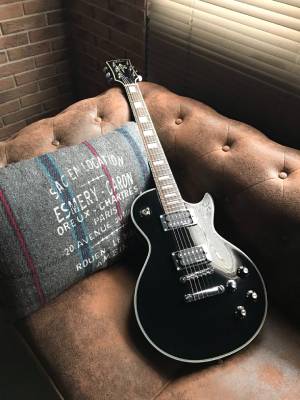How to Properly Maintain Your Guitar for Longevity

As guitar enthusiasts, we know that our beloved instruments are not just musical tools, but also cherished possessions that require proper care and maintenance to ensure their longevity. Whether you're a seasoned guitarist or just starting out, understanding how to properly maintain your guitar is essential in order to keep it in top shape and preserve its tone, playability, and value. In this comprehensive guide, we'll share our expert tips and techniques on how to properly maintain your guitar, so that you can enjoy its beauty and sound for years to come.
1. Clean and Polish Your Guitar Regularly
One of the simplest yet most effective ways to maintain your guitar is by keeping it clean and polished. Dust, dirt, and grime can accumulate on your guitar's body, neck, and fretboard, which can affect its playability and tone. To clean your guitar, use a soft, lint-free cloth to wipe down its body, neck, and fretboard, paying close attention to the areas around the strings and frets. Avoid using abrasive materials or harsh chemicals, as they can damage the finish or wood of your guitar. For stubborn dirt or fingerprints, you can use a mild guitar cleaner that's specifically formulated for guitars. Once your guitar is clean, use a quality guitar polish to restore its shine and protect its finish from fingerprints, smudges, and oxidation. Regular cleaning and polishing will not only keep your guitar looking pristine, but also help it sound its best.
2. Keep Your Guitar Properly Humidified
For your guitar to remain stable and playable, proper humidity is essential. The wood of your guitar can expand or contract as a result of too much or too little humidity, which can lead to a number of issues like warping, cracking, buzzing, or changes in intonation. Use a room humidifier or a guitar humidifier in the space where you store your guitar to keep it appropriately humidified. For the majority of guitars, a relative humidity level between 45 and 55 percent is ideal. Consider utilising a hygrometer to monitor the humidity level in your guitar case or room and make any necessary adjustments if you reside in an area with high humidity swings. Maintaining proper humidity levels will protect your guitar from costly repairs and keep it in good condition.
3. Check and Adjust Your Guitar's Neck Relief
The neck relief, or the amount of bow or curvature in your guitar's neck, plays a crucial role in its playability and intonation. Too much or too little neck relief can cause issues such as high action, buzzing, or changes in intonation, which can affect how your guitar feels and sounds. It's important to regularly check and adjust your guitar's neck relief to keep it in optimal condition. To check your guitar's neck relief, press down the first and last frets on the low and high E strings simultaneously, and look for the gap between the bottom of the strings and the top of the frets around the 7th or 8th fret. Ideally, the gap should be around 0.010-0.015 inches, or the thickness of a business card. If the gap is too large, you may need to tighten your truss rod to reduce the neck relief, and if it's too small, you may need to loosen the truss rod to increase the neck relief. It's important to make small adjustments and check the neck relief again until it's within the optimal range. If you're not comfortable adjusting your truss rod, it's best to seek the help of a qualified guitar technician.
4. Maintain Proper String Care and Replacement
Maintaining proper string care and replacement is crucial for optimal performance and longevity of stringed instruments. Regularly clean the strings with a dry cloth after each use to remove dirt and sweat that can accumulate and cause corrosion. Avoid touching the strings with bare hands to prevent transferring oils and moisture. Replace strings at recommended intervals or when they show signs of wear, such as loss of tone, clarity, or intonation. Use high-quality strings that are suitable for your instrument and playing style. Proper string care and replacement will help ensure that your instrument produces the best possible sound and stays in good condition for years to come.
- The Power of JBL Speakers: Unleashing the Ultimate Music Experience
- Choosing the Right Camera for Your Photography Style
- Understanding Different Types of Microphones: A Comprehensive Guide
- Choosing the Right Guitar: A Comprehensive Buying Guide
- The Benefits of Using Bluetooth Headphones in Everyday Life
